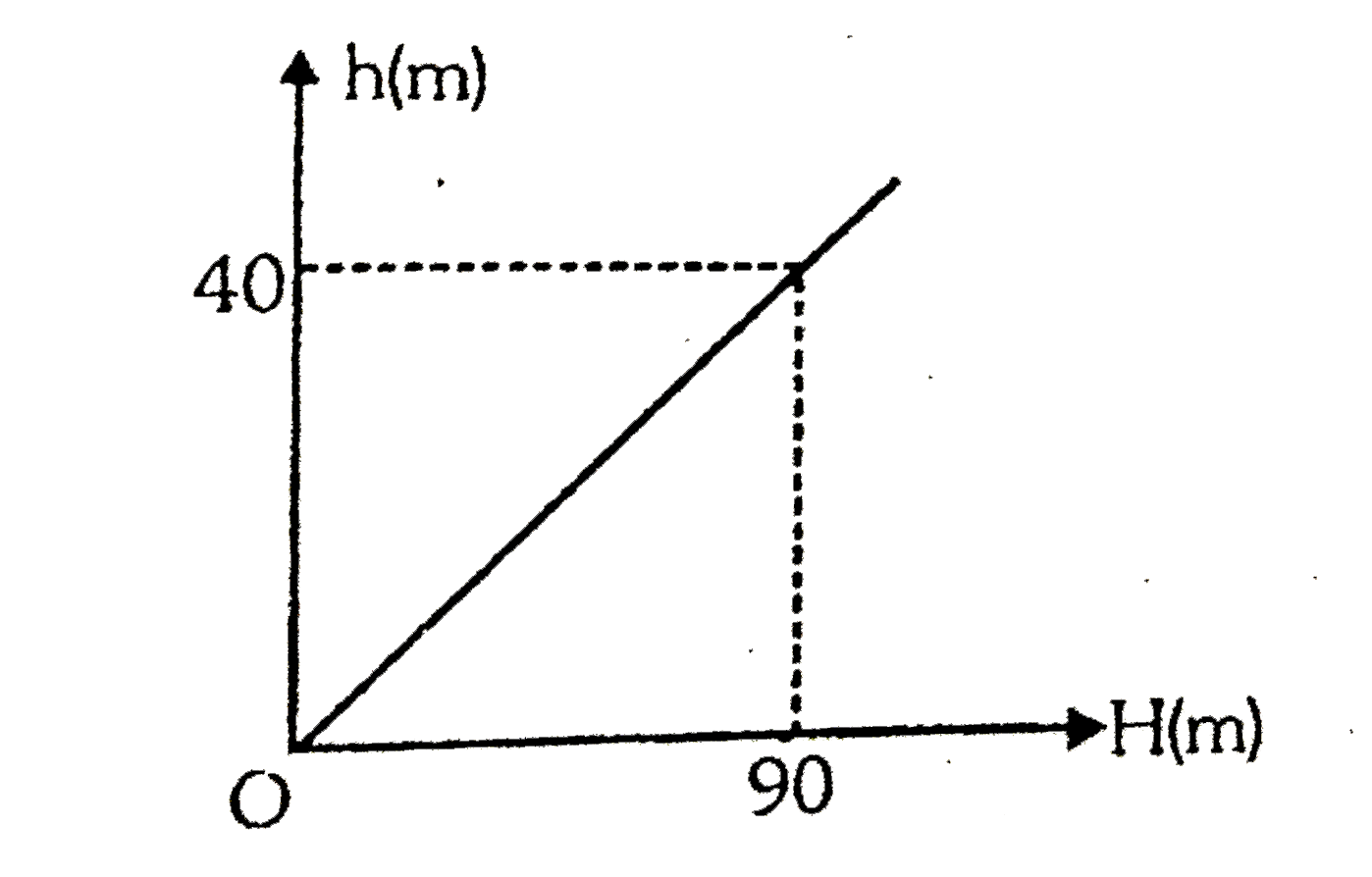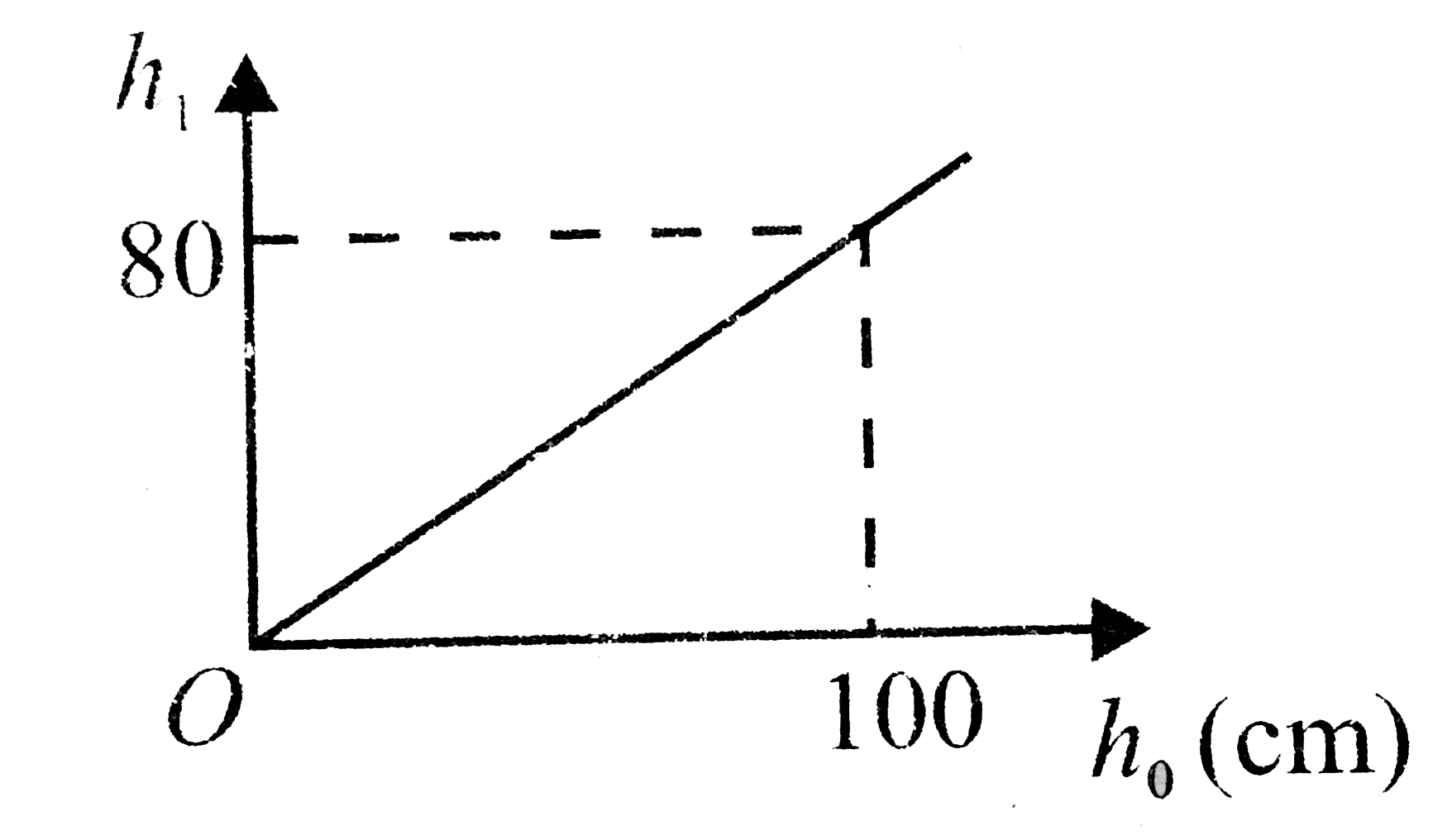A ball of mass 2kg dropped from a height H above a horizontal surface rebounds to a height h after one bounce. The graph that relates H to h is shown in figure. If the ball was dropped from an initial height of 81 m and made ten bounces, the kinetic energy of the ball immediately after the second impact with the surface was

320J
480J
640J
Can't be determined
The correct Answer is:(A)
From graph e=√hH=√4090=23
Kinetic energy of the ball just after second bounce
=12m(e2u)2=12me4u2=e4(mgH)=(234)(2)(10)(81)=320J
Topper's Solved these Questions
- CENTRE OF MASSBook:ALLENChapter:CENTRE OF MASSExercise:EXERCISE-I
Explore 40 Videos
- CENTRE OF MASSBook:ALLENChapter:CENTRE OF MASSExercise:EXERCISE-II
Explore 43 Videos
- BASIC MATHEMATICS USED IN PHYSICS &VECTORS Book:ALLENChapter:BASIC MATHEMATICS USED IN PHYSICS &VECTORS Exercise:EXERCISE-IV ASSERTION & REASON
Explore 11 Videos
- ELASTICITY, SURFACE TENSION AND FLUID MECHANICSBook:ALLENChapter:ELASTICITY, SURFACE TENSION AND FLUID MECHANICSExercise:Exercise 5 B (Integer Type Questions)
Explore 3 Videos
Similar Questions
A ball is dropped from a heght of 3.6 m and strikes a horizontal surface . It rebounds from the horizontal surface to height h . Calculate h , if coefficient of restitution is 0.6
View SolutionA ball dropped from a height of 2 m rebounds to a height of 1.5 m after hitting the ground. Then the percentage of energy lost is
View Solution
Knowledge Check
A ball released from a height ho above a horizontal surface rebounds to a height h1, after one bounce. The graph that relates h0 to h1 is shown Fig. If the ball (of the mass m) was dropped from an initial height h and made three bounces, the kinetic energy of the ball immediately after the third impact with the surface was
 A(0.8)3mghB(0.8)2mghC0.8mg(h/3)D[1−(0.8)3]mgh
A(0.8)3mghB(0.8)2mghC0.8mg(h/3)D[1−(0.8)3]mghA ball is dropped from a height of 25 dm above a fixed horizontal plane. If it rebounds to a height of 16 dm., then the coefficient of restitution is
A16/25B0.8C16g/25D0.8gA ball dropped from a height of 2 m rebounds to a height of 1.5 m after hitting the ground. Then the percentage of energy lost is
A25%B30%C50%D100%
A ball is dropped from a height h onto a floor and rebounds to a height h/6. The coefficient of restitution between the ball and the floor is
View SolutionA ball is dropped from a height of 20m on a floor for which e=1/2. The height attained by the ball after the second collision
View SolutionA ball is dropped from a height h on to a floor . If the cofficient of restitution is e, calculate the height the ball first rebounds ?
View SolutionA ball is dropped from height 'H' onto a horizontal surface. If the coefficient of restitution is 'e' then the total time after which it comes to rest is
View SolutionA ball is dropped from a height of 10 m. If the energy of the ball reduces by 40% after striking the ground, how much high can the ball bounce back ? (g=10m/s2)
View Solution

